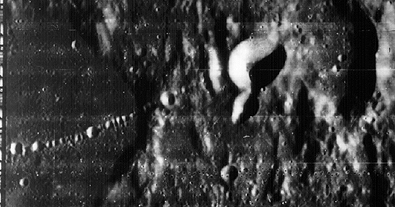crater chain

Lunar Orbiter 4 image of the Davy crater chain on the Moon. The chain stretches from Davy Y at left to the large, bright Davy G (diameter 15 kilometers). Note the even spacing of the craters. The chain may be the result of secondary impacts, volcanic activity, or an impactor which broke apart shortly before impact, similar to Comet Shoemaker/Levy 9 on Jupiter.
A crater chain is several craters along a general line that may be overlapping, touching, or detached from one another. A crater chain, or catena, is typically the result of either secondary impacts or volcanic activity. A secondary impact crater chain is usually aligned with a much larger impact crater, whereas a volcanic crater chain is associated with a volcanic fissure and may be due to explosions or collapse.
Several unusual crater chains have been found on Ganymede and Callisto that appear to be the impact scars of tidally disrupted comets or asteroids. These features serve to record the characteristics of comets and support the rubble-pile model for comet nuclei and some asteroids, in which these objects are formed of many small, loosely bound fragments.
A couple of crater chains have been found on Earth, including the Aorounga Craters (see Earth impact craters). A crater chain with a curved form is known as a crater arc.


